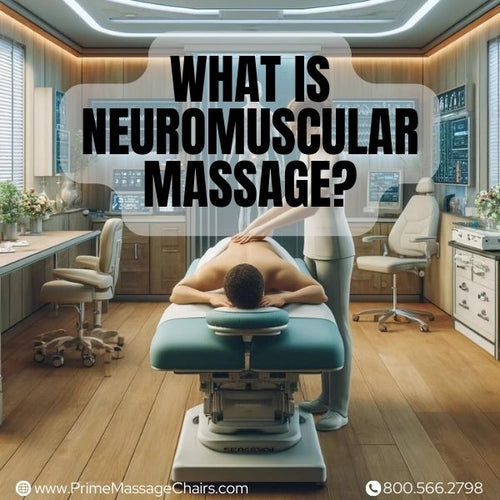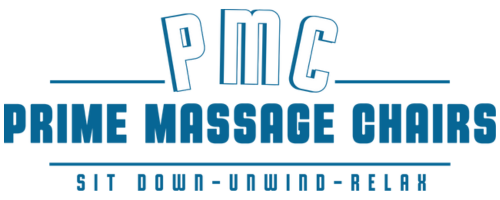
What is Neuromuscular Massage?
What is neuromuscular massage and can it help with deep muscle pain? Neuromuscular massage therapy is a unique approach that targets this issue directly.
Our article will guide you through how it works and why it might be the solution you've been searching for.
Keep reading to uncover how this therapy could offer relief.
Key Takeaways:
- Neuromuscular massage therapy targets tight spots or trigger points in muscles to ease both localized and referred pain, and has been shown to potentially improve range of motion and overall function.
- Therapists practicing neuromuscular therapy are typically trained to address chronic pain that may arise from nerve dysfunctions and muscle tension, though the specific requirements for this training can vary.
- While both neuromuscular and deep tissue massages address specific problem areas, neuromuscular therapy is distinct in its specialized focus on trigger points and often requires specific training to address chronic pain conditions effectively.
- Potential benefits of neuromuscular therapy include improved posture, possible long-term relief from chronic pain, and enhanced mobility, offering a complement to traditional medical treatments such as medication or surgery.
Exploring Neuromuscular Massage Therapy
Neuromuscular massage therapy focuses on certain areas of muscle tissue. It helps to relieve pain by addressing those spots in your muscles that feel really tight and sore.
Formation of Trigger Points
Trigger points form in your body because of muscle overuse, injury, or stress. These are knotty areas within your muscles that cause pain elsewhere when pressed.
Think of them as small patches in your muscles that have decided to throw a fit, leading to discomfort and stiffness not just where they sit but also in other parts of the body.
Addressing these trigger points is essential for relief from chronic ache and improving your range of motion.
Neuromuscular therapy zeroes in on these spots with precise pressure, helping to break the cycle of spasm and pain.
This method not only aims at immediate relief but also works on the underlying causes to prevent future issues.
Now let's explore how neuromuscular therapy offers relief from these troublesome trigger points.
Neuromuscular Therapy's Effectiveness in Alleviating Trigger Point Pain
Neuromuscular therapy (NMT) stands out as a powerful approach for treating trigger point pain.
This type of massage focuses directly on areas of tight muscle fibers that form from injuries or overuse.
These spots, known as trigger points, cause significant discomfort and even pain in distant body parts.
NMT specialists apply precise pressure to these sensitive spots, holding it for 30 seconds to two minutes.

By increasing circulation to the affected areas, NMT aids in flushing out toxins and nourishing damaged tissues, leading to relief from chronic pain and improved mobility, although individual results will vary.
The technique not only addresses the immediate area of discomfort but also targets underlying causes of muscular tension and stress.
For individuals experiencing back pain or soft tissue injuries, neuromuscular therapy may serve as a supplementary treatment option, potentially reducing the dependency on medications or surgical interventions.
Now let's explore how NMT differs from deep tissue massage techniques.
Comparing Neuromuscular and Deep Tissue Massage
Neuromuscular massage and deep tissue massage both aim to relieve pain, but they use different methods.

While neuromuscular therapy focuses on specific trigger points to ease muscle tension, deep tissue work goes deeper into the muscles and connective tissues.
Distinctions and Overlaps
One key difference between neuromuscular massage therapy (NMT) and deep tissue massage lies in the requirement for specialized certification.
Therapists offering NMT need specific training to address chronic pain linked to nerve harm, compression issues, lack of blood flow, and other severe conditions.
Deep tissue massages don't call for this level of certification but are still effective in easing muscular pains, shin splint massages, improving limited mobility issues, aiding injury recovery, lessening muscle tension, helping with fibromyalgia symptoms among others.
Despite these differences, both types of massage share common ground.
Each technique aims to alleviate discomfort in muscles and connective fibers.
They apply pressure to release tension across different layers of body tissues.
This approach can make a big difference for people suffering from a variety of aches and pains or those looking to recover from physical strain more effectively.
Both methods also use targeted pressure on specific points or areas that need relief—dubbed trigger point therapy—to enhance wellness and reduce pain.
Advantages of Neuromuscular Massage Therapy
Neuromuscular massage therapy brings big potential benefits, like deep relief for tight muscles.
This type of bodywork focuses on finding and fixing spots that hurt because they’re super tense—these are called trigger points.
By pressing just the right spot, a skilled therapist can make these areas feel much better. Of course individual results will vary.

This kind of treatment doesn’t just stop at easing pain; it goes further to improve how you move every day.
Whether you sit at a desk all day or are an athlete, this therapy may help your body work better and with less discomfort.
Plus, learning about proper posture through neuromuscular sessions can prevent new pains from popping up.
For those who have been dealing with soreness for a long time, getting this specific form of kneading might be what you need for lasting comfort.
The techniques used in neuromuscular therapy not only address immediate issues but also work on the deeper layers of muscle tissue where chronic pain often hides.
Long-term Potential Benefits for Trigger Point Relief
Getting a neuromuscular massage can do wonders for easing long-term pain from trigger points, but as previously mentioned, individual results will vary.
This type of therapy targets the deep layers of muscle where these knots form.
Over time, it eases the nerve compression and tissue contracture that cause discomfort.
The relief isn't just quick; it lasts. People suffering from ongoing pain may notice a big difference.
Neuromuscular massage outshines regular massages by focusing on specific areas that need attention rather than giving a general treatment.
It's like comparing targeted therapy to a broad approach—it simply works better for chronic issues.
This method helps improve posture too, as muscles relax and lengthen, reducing strain on the body's framework.
So, not only does this potentially alleviate pain, but it also supports better movement and health overall.
FAQs
What makes neuromuscular massage different from deep tissue massage?
Neuromuscular massage targets specific areas of muscle tension and trigger points, focusing on layers of tissue to release strain. Deep tissue massage, while also intense, works across the whole body to alleviate general muscle tension.
How can neuromuscular therapy benefit me?
If you suffer from chronic pain or have tight areas that seem never to relax, neuromuscular therapy can offer relief by treating those stubborn trigger points—leading not just to temporary ease but often long-term improvement.
What techniques do therapists use in neuromuscular massage?
Therapists trained in this specialized form apply manual pressure directly to the trigger points and strained muscles. Techniques might include proprioceptive neuromuscular facilitation and other methods aimed at releasing contracture of tissues.
Is a neuromuscular treatment right for everyone?
While many find relief through this type of therapy, it's perfect for individuals experiencing specific types of pain or dysfunction—like sports injuries or repetitive strain issues. Always consult with a licensed therapist to see if it matches your needs.
Can I expect immediate relief after one session?
Some people notice an improvement right away; however, true healing comes with time and possibly multiple sessions—especially if dealing with long-standing issues like scar tissue buildup or chronic pain patterns.
Why choose a certified neuromuscular therapist over a regular masseuse?
A certified neuromuscular therapist has specialized training in understanding how various layers of tissue interact and how they contribute to pain and dysfunction within the body—a level beyond what's covered in standard massage certification programs.
Conclusion
Neuromuscular massage therapy and deep tissue massage both have their special spots in the world of massage.
They target our aches in different ways, but they aim for the same goal: to ease our pain.
One digs deep into muscle layers while the other zones in on nerve-induced discomforts.
If you're looking for relief from chronic stiffness or serious muscle spasms, it's worth exploring what these therapies offer.
Each brings its own kind of help, making sure there's something out there for everyone seeking comfort and recovery.
Disclaimer:
We do not provide medical advice. The content of this article, including text, graphics, and other material, is for informational purposes only. It is not intended to be a substitute for professional medical advice, diagnosis, or treatment. Always seek the advice of your physician or other qualified health provider with any questions you may have regarding a health condition. Never disregard professional medical advice or delay in seeking it because of something you have read in this article or on our website.
